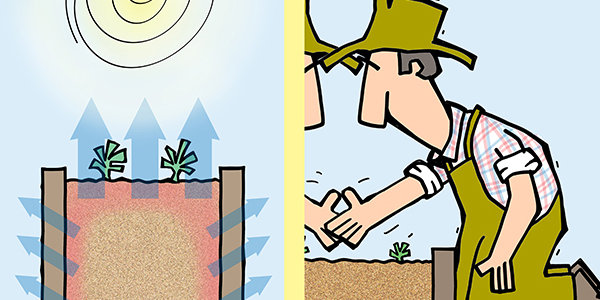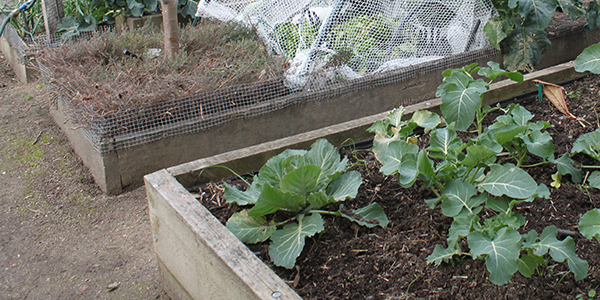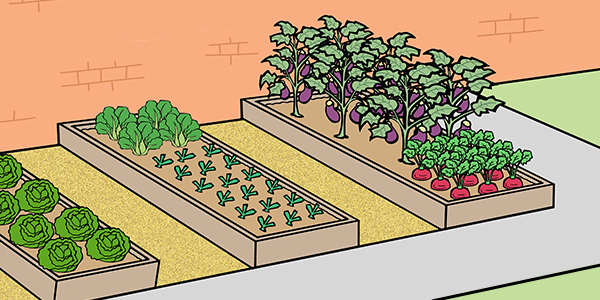This page explains how the width and heights of raised beds influence temperature, evaporation and accessibility.
Ideally you should rarely step on your vegetable beds. This is because regular stepping on them will gradually compact the soil, which creates less than ideal conditions for growing vegetables.
A raised garden bed should be no wider than the width that you can comfortably reach into the centre of the bed without having to step onto it. This will depend on how long your arms are, but for most people this will mean a bed of between 90 centimetres and 1.2 metres wide. The most common width being about a metre wide.
Any wider than about 1.2 metres wide will force you to step onto the bed in order to get to it’s centre.

A raised garden bed should be no wider than the width that you can comfortably reach into the centre of the bed without having to step onto it.
The advantage of high raised beds is that tending them involves less stooping, which is a big advantage for older gardeners or people with bad backs. However, the higher the sides of a raised bed are the more moisture is lost from the bed due to evaporation.
This is especially so if the sides are made of wood as timber is porous, so it will draw moisture out of the soil and into the timber as the outer side of the timber is being dried by the sun. But high raised beds with metal sides also have increased evaporation rates. While water cannot pass through the sides the metal absorbs heat from sunlight and passes it through to the soil. The warmer the soil, the higher the evaporation rate.
In terms of minimising evaporation the ideal height for a raised bed is around 20 cm. This is high enough to create warmer soil and a level surface (as described on the RAISED VEGETABLE BEDS – Advantages And Disadvantages webpage) but not too high to cause excessive amounts of evaporation. Unless you are elderly or have back problems that make it difficult for you to bend over then there is no reason to build a raised bed higher than 20 Centimetres.
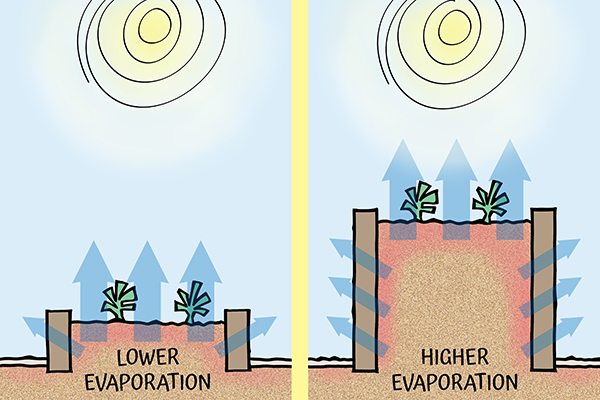
The higher the sides of a raised bed are the more moisture is lost from the bed due to evaporation.
If for whatever reason you wish to build a wooden raised bed higher than 20 cm then consider lining the inside of the bed’s wall with a plastic builders’ plastic. This will reduce the amount of evaporation that occurs. If the timber you are using is treated pine the plastic will also help stop any chemicals used to treat the pine from leaching out into your vegetable bed’s soil.
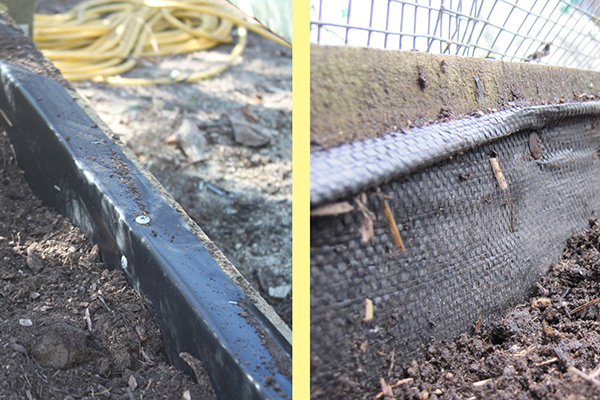
LEFT: Timber raised bed lined with builders’ plastic. RIGHT: lined with weed mat. The lining is temporarily held in place using a staple gun then secured with button screws.

